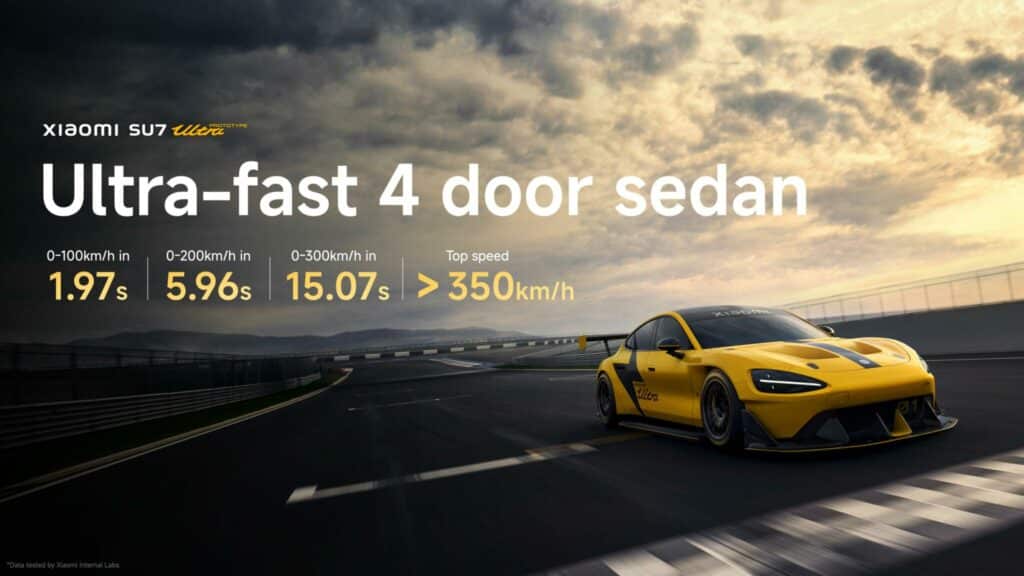
Xiaomi, the Chinese smartphone-maker that has recently taken a dip into electric cars with the SU7 has now unveiled a hyper-sports version of its 4-door EV in the SU7 Ultra, which it aims to be the fastest 4-door car in the world, gas or electric.
The Xiaomi SU7 has been making waves as an affordable electric sportscar in a similar format to the Porsche Taycan.
So far it’s only available in China, but comes at the attractive base price of 215,900 RMB, or just under $30k USD, for the 299hp base model. An upgraded “Max” model is available with a base price of around $41k USD, with 673hp and improved performance all around.
The car sold out almost immediately after it was unveiled, building up a seven-month waiting list on the back of some 50,000 orders almost overnight.
The car has also garnered positive reviews, though quality and durability have been somewhat in question.
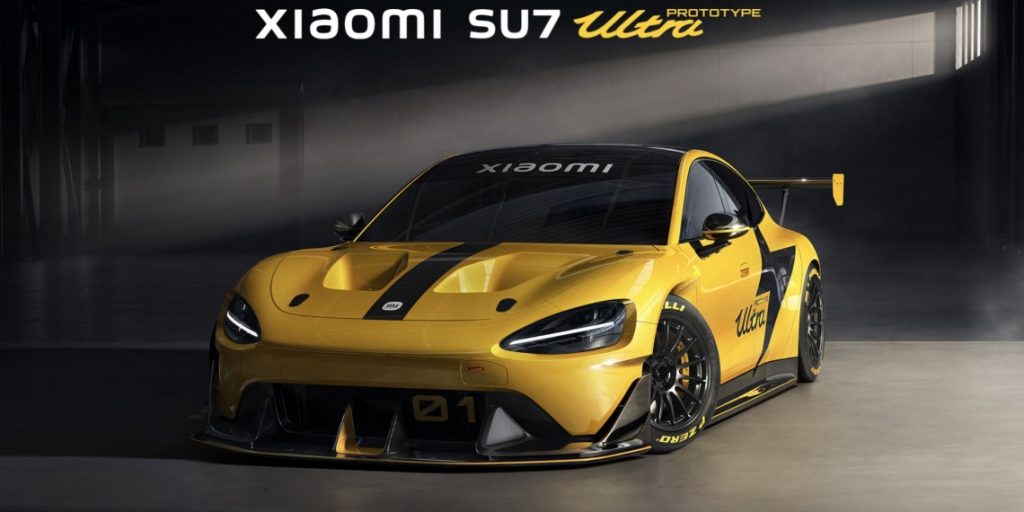
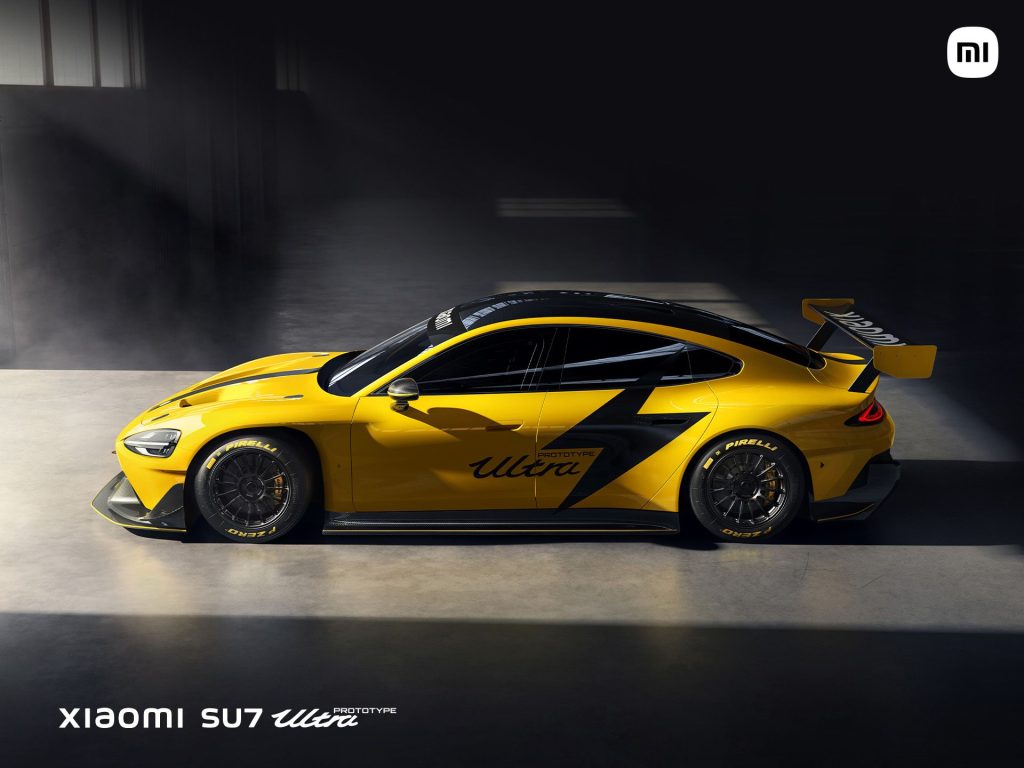

But now Xiaomi is upping the ante even further, and has shown off a new “Ultra” Prototype version of the SU7, with extreme hypercar performance that goes well beyond what the SU7 Max is capable of.
The new SU7 Ultra has more than double the horsepower of the Max version, with a whopping 1548hp. The power comes from three motors – two of Xiaomi’s new confusingly named V8s motors, and one V6s (they’re all electric, they just chose a confusing name… who would ever do that).
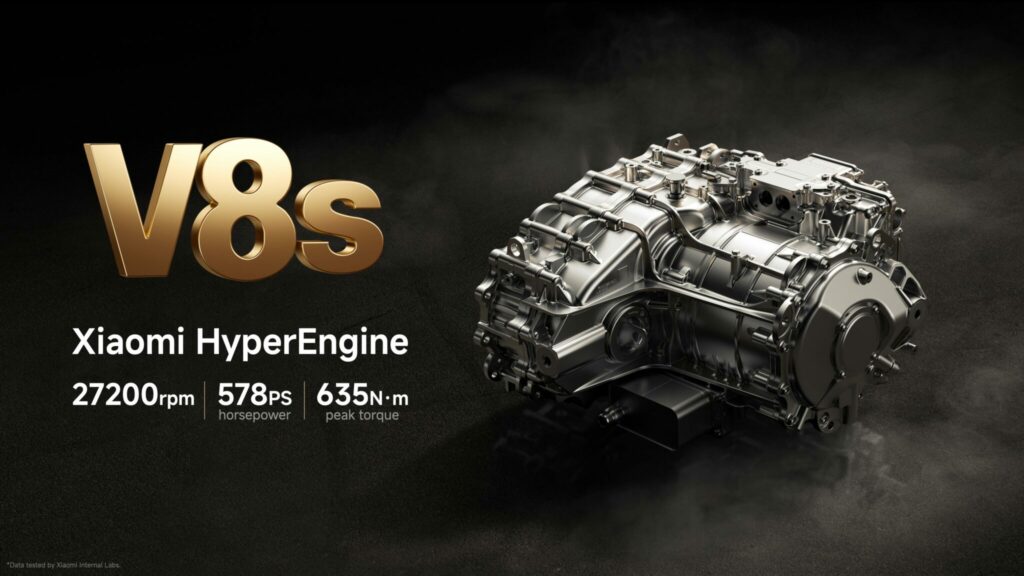
With that much power, you’ll be able to accelerate from 0-100kmh (0-62mph) in 1.97 seconds, or 0-200 (124) in 5.96 seconds. Top speed is 350kmh, or 217mph.
Xiaomi says the motors can provide up to 0.6G of regenerative braking force, or up to 2.36G with the physical brakes, braking from 100kmh/62mph to zero in just 25 meters.
At a weight of 1900kg or 4188lbs, it’s not particularly slim. But it is still light compared to many of the overpowered hyper-sports cars out there today. All body panels are made of carbon fiber for weight reduction – which will probably add quite a bit of expense to the car.

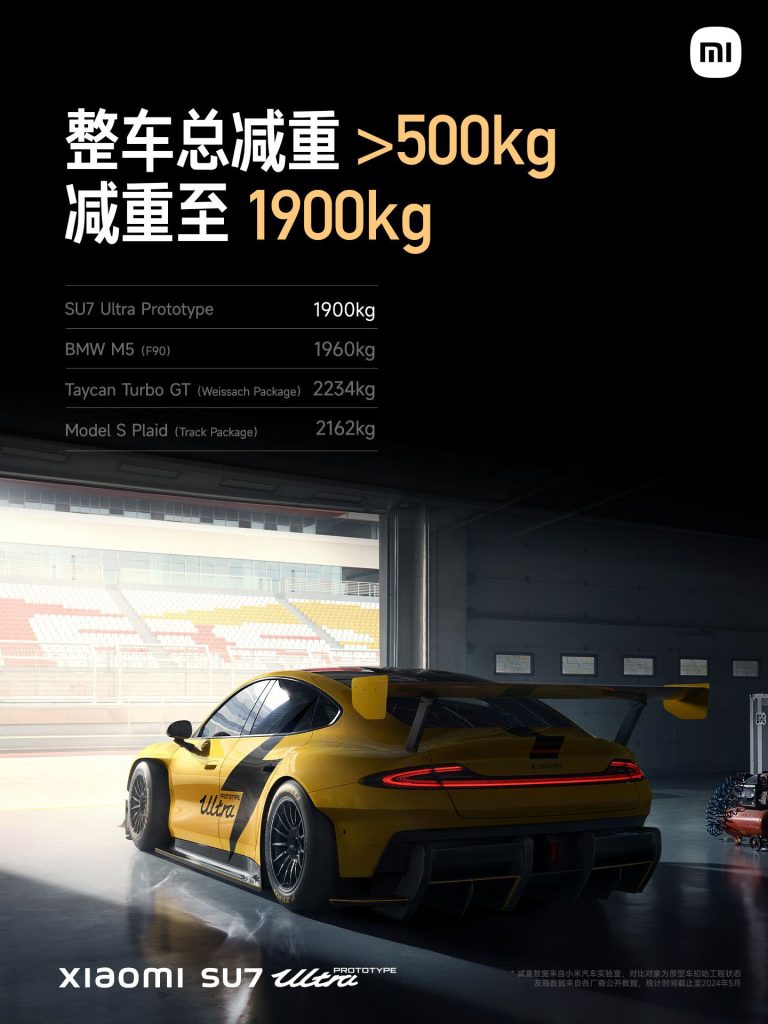
It’s both wider and longer than the SU7 Max, with modified body panels for aerodynamic and cooling performance, and a large wing at the back capable of generating 2145kg/4728lbs of downforce.
We don’t know how big the battery is, but the Max version has a 101kWh CATL Qilin battery. The Ultra uses CATL’s new Qilin II, which is supposedly able to charge at a C-rate of 5.2 – which means it can be charged from zero to full in 12 minutes, as long as it’s connected to a sufficiently high-powered 897V charger.
And the battery is supposedly capable of putting out up to “greater than 800kw/1072hp” even at 20% SOC, which should allow the car to do some long track days – assuming Xiaomi can keep the temperatures down, which is often the achilles heel of electric track cars (or any car, really).
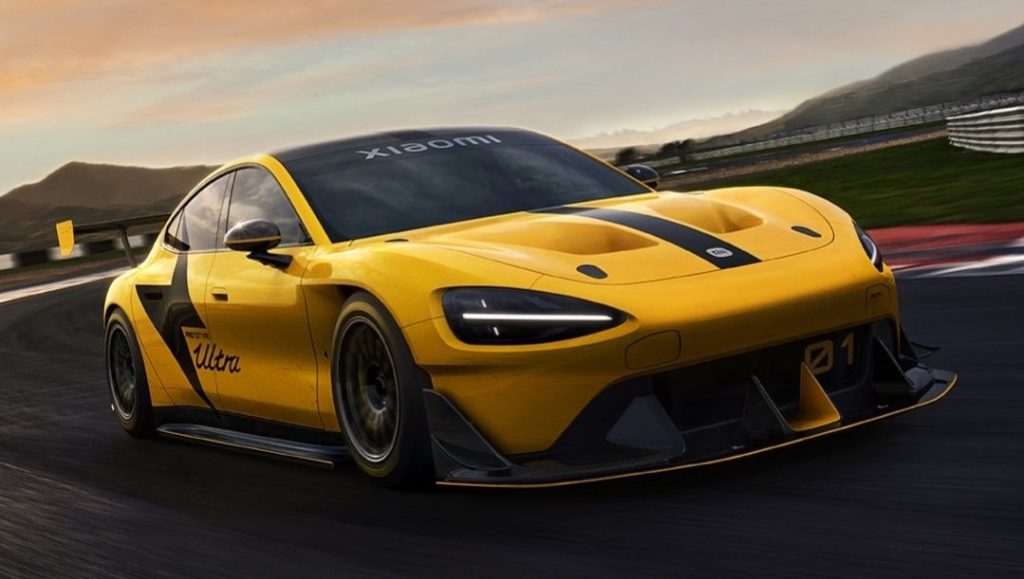

Speaking of the track, Xiaomi wants the SU7 Ultra to be the fastest 4-door ever made when it comes to track days. It’s planning to take the car out to Nürburgring in October to try to set a best lap. Currently, the Nürburgring EV record is held by the Volkswagen ID.R, and the 4-door EV record has been traded back and forth but is currently held by the Porsche Taycan at 7 minutes and 7 seconds.
Porsche certainly knows its way around Nürburgring (it has the overall record at 5:19 with its 919 hybrid Le Mans racecar), so it will be quite the challenge for smartphone-maker Xiaomi.
But we’ve seen other Chinese upstarts set records there before. NIO set a 6:45 in an EP9 back in 2017, setting a “production” car record and an incredibly impressive lap, before the company was really established in automaking.
If Xiaomi can accomplish a similar feat, it will certainly be impressive. It does have better specs than the Taycan, with over 500 more horsepower. But in electric racing, so many times it has come down to which company is better able to manage temperatures, especially around such a difficult track as the Green Hell of Nürburgring. In that, Porsche has a lot of experience – but we’ll have to see what Xiaomi can do.
Xiaomi hasn’t announced availability or pricing yet, so this may or may not actually hit the market. It’s currently being called a “prototype,” but we can imagine with the popularity of the SU7, that people might want to get their hands on this one. So we’ll have to wait and see if it becomes available – and if it does, whether it stays in China or manages to come overseas.
